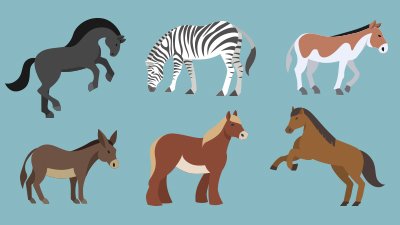Yeast Begat Yeast
“Evolution in progress” said to show how easily multicellularity evolved
News Source
- Scientific American: “Test Tube Yeast Evolve Multicellularity”
“Despite their modesty,” William Ratcliff and Michael Travisano’s “achievement has earned praise and admiration from evolutionary biologists around the world,” according to ScienceDaily.1 What have they done? According to Ratcliff, they don’t just answer questions about evolution in their lab: they “recreate it.”2 According to their work published January 16 in the Proceedings of the National Academy of Sciences, they have elucidated a way multicellular organisms could easily evolve from unicellular ones by evolving multicellular yeast in their lab. (We discussed Ratcliff’s announcement about their results last summer in Multicellular Life Grows In Test Tube.)
Evolutionists are convinced that multicellular life forms evolved from single-celled ones but cannot explain how single cells could unlearn the selfishness required for survival and learn to cooperate. “Traditional theories make this out to be a difficult transition because you have to somehow turn off selection on the individual cells and turn it on for the collective,” according to a German evolutionary biologist, but Travisano’s team, he said, demonstrated “these transitions can be super easy.”
Travisano and Ratcliff chose a variety of brewer’s yeast (Saccharomyces cerevisiae) that characteristically forms a snowflake-cluster of adherent cells when it reproduces. They demonstrated the yeast had this characteristic behavior before beginning the experiment. Some yeast and other microorganisms aggregate into biofilms, but with this particular variety “each cell was seen to give rise to a new snowflake-type cluster.”3
By then centrifuging the yeast each day and only keeping the large clusters that sank to the bottom, they artificially selected the best snowflake-formers to survive and reproduce. In two months, all the yeast “had evolved into snowflakes.”4
Travisano’s team said their newly evolved multicellular yeast then developed the capacity to behave like conventional multicellular organisms by developing “division of labor.” The required labor was apoptosis—cellular suicide of rows of cells. This coordinated cell death enabled the huge clusters to break into smaller clusters that reproduce more efficiently. Since single cells were sacrificing themselves for the good of the whole—analogous to “the split seen in more complex multicellular organisms, with body cells that die off every generation and germline cells (sperm and eggs) that carry over into the next one”5—the researchers believed their snowflakes had transitioned to genuine multicellularity.
Despite Ratcliff’s assertion that he has recreated evolution and demonstrated how easily multicellularity got off the evolutionary ground long ago, the fact is these yeast characteristically formed snowflake clusters before any selection pressure was applied to them. How could Ratcliff evolve something that already existed?
When driven to form a population of large snowflakes by selection pressure, these yeast were still the same snowflake-forming yeast they’d always been.
When driven to form a population of large snowflakes by selection pressure, these yeast were still the same snowflake-forming yeast they’d always been. And when those large snowflakes of yeast showed how they were able to cooperate and detach manageable-sized reproducing clusters, they were still just doing what other microorganisms do under similar circumstances. Coordinated cellular death—apoptosis—is not unique to multicellular organisms. Apoptosis is common in biofilms-cooperative communities of microorganisms like dental plaque and slime mold. Furthermore, apoptosis is already known to occur in brewer’s yeast.6
The “divide-and-stick”7 mechanism of multicellular evolution may have been instrumental for other organisms too, the researchers suggest. For instance, they write, “Choanoflagellates, the closest unicellular ancestor to animals, can form multicellular colonies through postdivision adhesion, raising the possibility that a similar step was instrumental in the evolution of animal multicellularity.” However, what they are really pointing out is that some other microorganisms also already have the capacity to form clusters of cells adherent to each other after division. That characteristic has not been demonstrated to lead to multicellular organisms of any new type but only reveals a characteristic of some microorganisms. No new ability is acquired and no new kind of organism is formed. Furthermore, the ancestral relationship to which the team refers is pure speculation and also violates the biblical principle that God created all kinds of organisms to reproduce within their created kinds.
No new kind of organism has evolved in Travisano’s lab. His team is merely reporting the results of two months of standard agricultural husbandry principles applied to yeast. Some evolutionary biologists have posed questions about the genetics underlying the results. Massachusetts evolutionary biologist Mansi Srivastava, for instance, commented, “What remains to be seen for me is how relevant is it to actual transitions to multicellularity” and “what the underlying genetic changes were.”8 Stony Brook biochemist Todd Miller likewise wonders if there were “any changes in expression of signaling genes after they selected the snowflakes.”16 That work may yet be forthcoming and might reveal a mechanism for variation within the created kind. But since the yeast were already proven to have the ability to do what they later did, they did not evolve into anything new, just fluffier yeast.
Further Reading
For More Information: Get Answers
Remember, if you see a news story that might merit some attention, let us know about it! (Note: if the story originates from the Associated Press, FOX News, MSNBC, the New York Times, or another major national media outlet, we will most likely have already heard about it.) And thanks to all of our readers who have submitted great news tips to us. If you didn’t catch all the latest News to Know, why not take a look to see what you’ve missed?
(Please note that links will take you directly to the source. Answers in Genesis is not responsible for content on the websites to which we refer. For more information, please see our Privacy Policy.)
Footnotes
- University of Minnesota, “Biologists Replicate Key Evolutionary Step,” ScienceDaily, January 18, 2012, http://www.sciencedaily.com/releases/2012/01/120117144330.htm.
- Ibid.
- www.pnas.org/content/early/2012/01/10/1115323109.full.pdf+html
- Ed Yong, “Yeast Suggests Speedy Start for Multicellular Life,” Nature, January 16, 2012, doi:10.1038/nature.2012.9810.
- Ibid.
- Mariko Yamaki, Takashi Umehara, Takahiko Chimura, and Masami Horikoshi, “Cell Death with Predominant Apoptotic Features in Saccharomyces cerevisiae Mediated by Deletion of the Histone Chaperone ASF1/CIA1,” Genes to Cells 6, no. 12 (December 2001): 1043–1054, doi: 10.1046/j.1365-2443.2001.00487.x.
- Yong, “Yeast Suggests Speedy Start for Multicellular Life.”
- Jef Akst, “Evolving Multicellularity,” TheScientist, January 16, 2012, http://www.the-scientist.com/?articles.view/articleNo/31605/title/Evolving-Multicellularity/.
Recommended Resources

Answers in Genesis is an apologetics ministry, dedicated to helping Christians defend their faith and proclaim the good news of Jesus Christ.
- Customer Service 800.778.3390
- © 2024 Answers in Genesis






